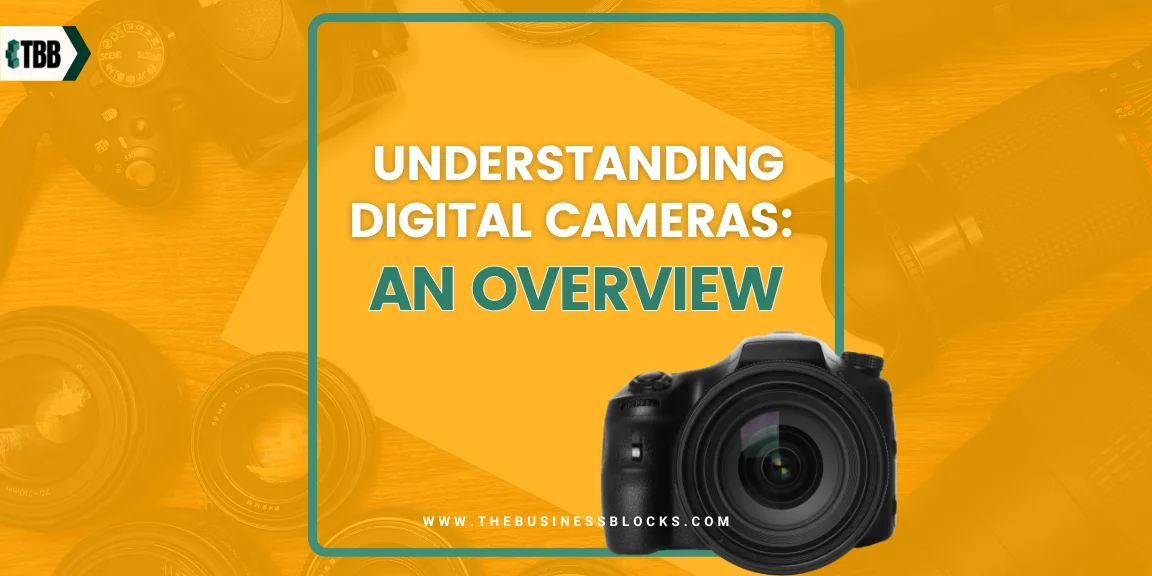In the dynamic world of photography, the evolution of technology has given rise to a revolutionary tool—the digital camera. From capturing cherished moments to creating breathtaking art, digital cameras have become integral to our visual storytelling.
This article will guide you through the fundamental aspects, features, and advancements in the realm of digital photography. Whether you’re a novice eager to grasp the basics or an enthusiast seeking to deepen your understanding, join us on a journey into the heart of digital imaging. Let’s demystify the magic behind every click, decoding the language of pixels, lenses, and sensors, to empower you in harnessing the full potential of your digital camera.
Are you ready to take control of your camera and unleash your creativity?
There are endless possibilities for photography by seizing control of your camera settings and unleashing your creative vision. From mastering manual modes to experimenting with composition, the journey to capturing extraordinary moments begins with your readiness to navigate the fascinating world of digital imaging.
Discover the power to capture moments in unprecedented clarity, explore the nuances of lenses, and unlock the potential of advanced settings. This article is your key to transforming snapshots into artistic expressions, creating a desire to elevate your photography skills.
Join us as we provide practical insights and a user-friendly guide. Your photographic journey starts here.
Why is it called a digital camera?
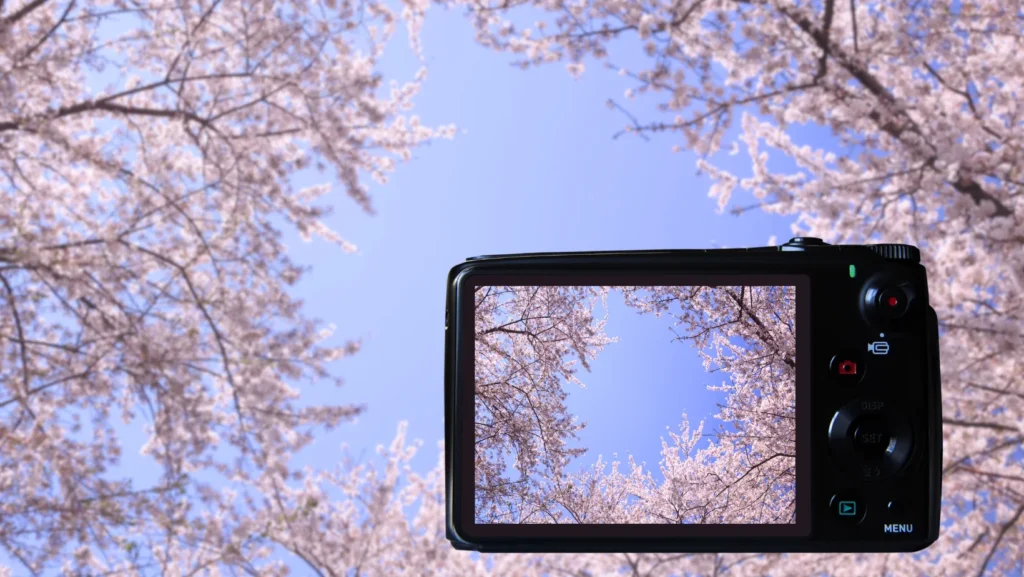
A digital camera is so named because it captures and stores images in a digital format. Unlike traditional film cameras that use photographic film to record images, a digital camera utilizes electronic sensors to convert light into digital data. The resulting digital files can be stored, edited, and shared electronically, marking a significant departure from the analog, film-based technology that characterized traditional photography. The term “digital” in digital camera refers to the use of discrete digits (or bits) to represent and store visual information in a numerical, electronic format.
Did you know?
- The global revenue in the ‘Digital Cameras’ segment of the consumer electronics market was forecast to continuously increase between 2024 and 2028 by 1.4 billion U.S. dollars (+5.81 percent).
- Canon dominated the global digital camera market in 2023, accounting for nearly half of it. Sony and Nikon followed in the ranking, with 26 and 12 percent of the market, respectively. Panasonic recorded a market share below five percent.
How does it work?
Digital cameras work by capturing and converting light into electronic signals, which are then processed and stored as digital image files.
Here’s a simplified overview of how digital cameras function:
- Light Entry: Light enters through the camera’s lens, which focuses it onto an image sensor.
- Image Sensor: The image sensor, typically a CCD (Charge-Coupled Device) or CMOS (Complementary Metal-Oxide-Semiconductor) sensor, is a key component that converts light into electronic signals.
- Pixel Formation: The image sensor is composed of millions of tiny photosensitive cells called pixels. Each pixel captures light and converts it into an electrical charge.
- Analog-to-Digital Conversion: The accumulated electrical charges in each pixel are then converted into digital data through an analog-to-digital converter (ADC).
- Digital Image Processing: The digital data is processed within the camera using algorithms to enhance color, contrast, and sharpness, resulting in a finalized digital image.
- Storage: The digital image is then stored in a memory card or internal storage as a digital file, commonly in formats like JPEG or RAW.
- Display and Review: The camera’s LCD screen or electronic viewfinder allows users to preview and review the captured images.
- Transfer and Editing: Images can be transferred to a computer or other devices for further editing, sharing, or printing.
The entire process happens in fractions of a second when you press the shutter button. Digital cameras offer photographers flexibility and convenience, allowing for quick adjustments, easy sharing of images, and the ability to store a large number of photos in a compact digital format.
Who Invented Digital Cameras?
The invention of digital cameras involves the contributions of multiple individuals and the progression of technology over time. One of the key pioneers in the development of digital imaging technology was Steven Sasson, an engineer at Eastman Kodak. In 1975, Sasson built the first known digital camera prototype, which used a CCD sensor to capture black-and-white images and stored them on a cassette tape.
The concept of digital imaging continued to evolve, and the first commercially available digital camera was the “Fuji DS-1P,” introduced by Fujifilm in 1988. It marked a significant step in the transition from film to digital photography.
It’s important to note that the invention and development of digital cameras were collaborative efforts involving multiple engineers, researchers, and companies over the years. The technology has continually advanced, leading to the diverse range of digital cameras available today.
What are the Three Basic Types of Digital Cameras?
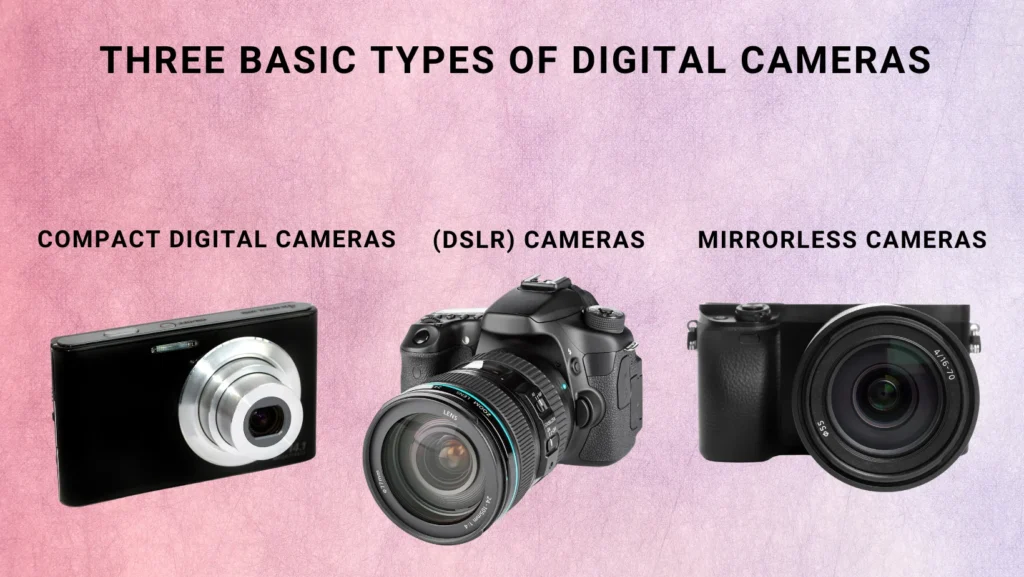
The three basic types of digital cameras are:
1. Compact Digital Cameras (Point-and-Shoot):
These cameras are designed for simplicity and ease of use. They are compact, lightweight, and often fit easily into pockets. Compact digital cameras typically have automatic settings, making them suitable for casual photographers who want to capture everyday moments without delving into manual controls.
2. Digital Single-Lens Reflex (DSLR) Cameras:
DSLR cameras are known for their versatility and high-quality images. They feature an interchangeable lens system, allowing users to switch between different lenses for various purposes. DSLRs offer manual controls for advanced users, making them suitable for photography enthusiasts, professionals, and those who want more creative control over their shots.
3. Mirrorless Cameras:
Mirrorless cameras combine the benefits of compactness with the image quality and interchangeable lens capabilities of DSLRs. They lack the mirror mechanism found in DSLRs, resulting in a more compact and lightweight design. Mirrorless cameras are known for their fast autofocus systems and electronic viewfinders. They cater to a range of users, from beginners to advanced photographers.
Each type of digital camera serves different needs and preferences, catering to a diverse range of users with varying levels of expertise and specific photography requirements.
What are the various Special Features available in Digital Cameras?
Digital cameras come with a variety of special features to enhance photography and cater to different preferences.
Here are some common special features found in digital cameras:
Image Stabilization (IS) or Vibration Reduction (VR):
Reduces blurriness caused by camera shake, particularly useful in low-light conditions or when using telephoto lenses.
Face Detection:
Automatically detects and focuses on human faces in the frame, ensuring well-exposed and sharp portraits.
Auto-Focus (AF) Points:
Multiple focus points for accurate and quick focusing, especially in DSLRs and mirrorless cameras.
Scene Modes:
Pre-programmed settings for specific scenes (e.g., landscape, portrait, macro) to optimize camera settings for various shooting conditions.
Wi-Fi and Bluetooth Connectivity:
Allows wireless transfer of photos to smartphones, tablets, or computers, as well as remote control of the camera.
4K Video Recording:
Captures high-resolution video footage, providing excellent detail and clarity.
High-Speed Burst Mode:
Enables the capture of a series of rapid shots in quick succession, ideal for action photography.
HDR (High Dynamic Range):
Combines multiple exposures to create an image with a broader range of tones, enhancing details in both shadows and highlights.
Touchscreen Displays:
Allows users to navigate menus, select focus points, and review images by tapping or swiping on the camera’s screen.
Panorama Mode:
Captures and stitches together multiple images to create a wide-angle panoramic photo.
Silent Shutter Mode:
Reduces or eliminates the sound produced by the shutter, useful in quiet environments.
In-Camera Filters and Effects:
Applies creative filters, effects, and color adjustments directly in the camera for artistic expression.
GPS (Global Positioning System):
Embeds location information into image metadata, allowing users to track where photos were taken.
Time-Lapse Photography:
Automatically captures a series of images at set intervals to create a sped-up video of a changing scene.
Raw File Support:
Allows the saving of uncompressed, unprocessed image files for greater flexibility in post-processing.
These features vary across different camera models, and advancements in technology continue to introduce new and innovative functionalities to meet the evolving needs of photographers.
Other Uses of Digital Cameras
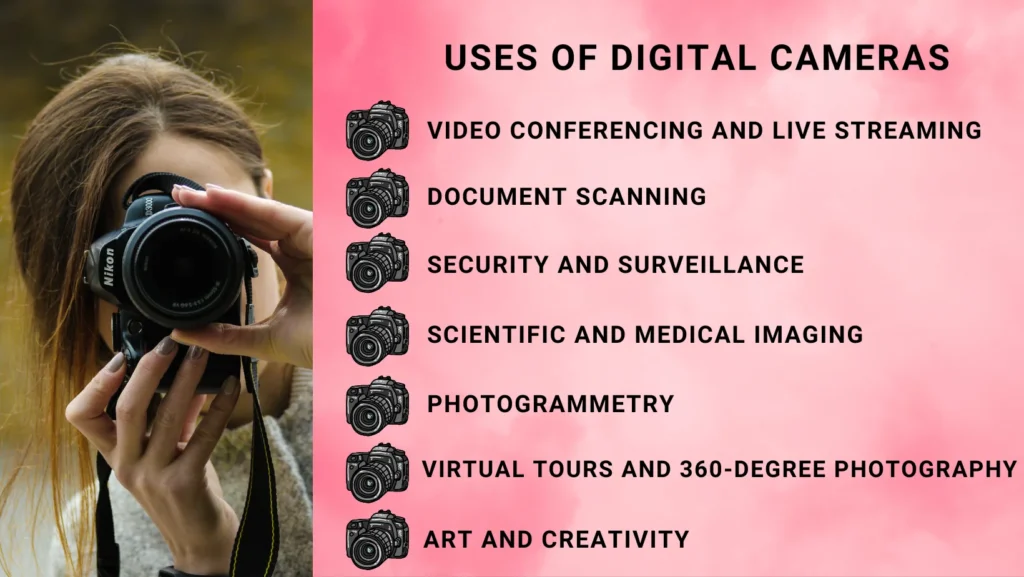
Beyond traditional photography, digital cameras have found various applications in diverse fields.
Here are some additional uses of digital cameras:
Video Conferencing and Live Streaming:
Built-in or external webcams on computers and devices facilitate video conferencing and live streaming for communication and online events.
Document Scanning:
Digital cameras can be used to capture documents, receipts, and other paperwork, providing a quick and convenient way to digitize physical records.
Security and Surveillance:
Surveillance cameras use digital technology for monitoring homes, businesses, and public spaces, offering features like motion detection and remote access.
Scientific and Medical Imaging:
Digital cameras play a crucial role in scientific research, allowing for precise imaging in fields such as microscopy, astronomy, and medical diagnostics.
Photogrammetry:
Digital cameras are employed in photogrammetry, a technique used to create accurate 3D models from multiple 2D images. This is applied in fields like architecture and surveying.
Virtual Tours and 360-Degree Photography:
Digital cameras capable of capturing panoramic and 360-degree images are used for creating virtual tours, immersive experiences, and virtual reality content.
Art and Creativity:
Digital cameras are tools for artistic expression, utilized by painters, sculptors, and other artists for documenting and promoting their work.
Digital cameras have become versatile tools, expanding beyond conventional photography to impact numerous aspects of our daily lives and various industries. Advances in technology continue to broaden their applications and capabilities.
The Pros and Cons of Digital Cameras
The world of digital photography opens a realm of creative possibilities and technical considerations. Let us have a look at its pros and cons.
Pros of Digital Cameras:
Instant Feedback:
Users can instantly review and assess photos, allowing for immediate adjustments and retakes.
Storage Convenience:
Digital cameras store images electronically, eliminating the need for physical film and allowing for high-capacity storage on memory cards.
Editing Flexibility:
Digital images can be easily edited, manipulated, and enhanced using software, offering creative freedom.
Cost Efficiency Over Time:
While initial costs vary, digital photography eliminates recurring expenses for film and processing.
Easy Sharing:
Digital photos can be quickly shared through online platforms, social media, and email.
Low-Light Performance:
Many digital cameras excel in low-light conditions, with improved ISO capabilities.
Video Recording:
Most digital cameras offer video recording features, expanding their functionality.
Wireless Connectivity:
Built-in Wi-Fi and Bluetooth enable wireless photo transfer and remote camera control.
Advanced Features:
Digital cameras come with various features such as autofocus, face detection, and multiple shooting modes.
Multiple Exposure Options:
Features like HDR and bracketing allow users to capture and merge multiple exposures for enhanced dynamic range.
Cons of Digital Cameras:
Initial Cost:
High-quality digital cameras can have a significant upfront cost compared to basic film cameras.
Learning Curve:
Mastering manual settings and post-processing techniques may have a steeper learning curve for beginners.
Battery Dependency:
Digital cameras rely on batteries, and battery life can be a concern, especially during extended use.
Fragility:
Digital cameras, particularly compact ones, can be more delicate and prone to damage compared to robust film cameras.
Sensor Dust:
Interchangeable lens cameras may be susceptible to sensor dust, requiring occasional cleaning.
Understanding these pros and cons helps individuals make informed decisions based on their preferences, needs, and level of expertise in photography.
13 Tips for Selecting Your Digital Camera
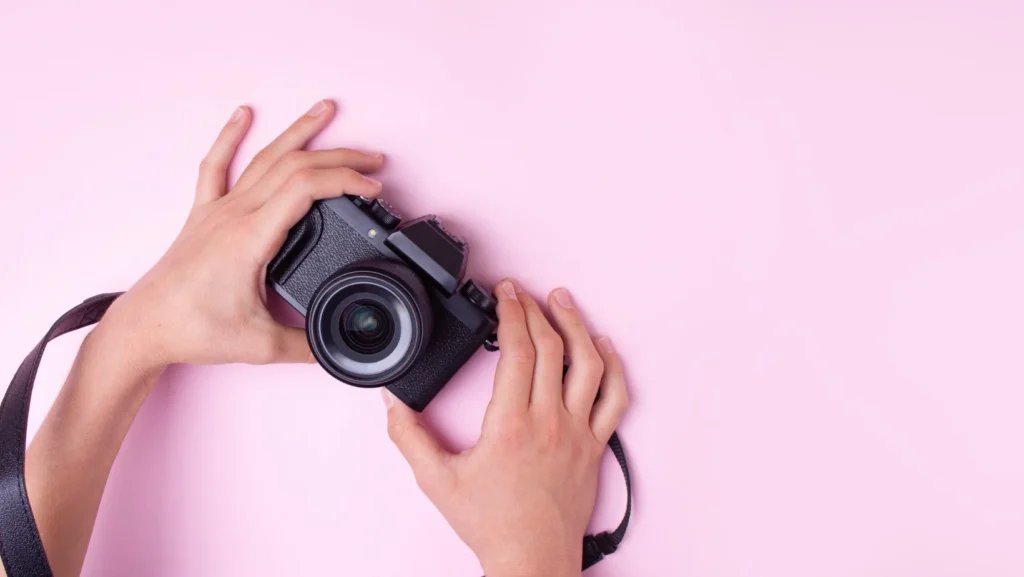
Selecting the right digital camera involves considering various factors to ensure it aligns with your photography needs and preferences.
Here are some tips to guide you in choosing the perfect digital camera:
- Define Your Purpose:
Identify your primary use for the camera—whether it’s casual photography, professional work, travel, or specific genres like landscape or portrait photography.
- Consider Your Skill Level:
Assess your photography expertise. Entry-level cameras with user-friendly features are suitable for beginners, while advanced users may opt for models with manual controls.
- Determine the Camera Type:
Choose between compact (point-and-shoot), DSLR (Digital Single-Lens Reflex), or mirrorless cameras. Each type offers distinct advantages, so pick one that aligns with your preferences and intended use.
- Sensor Size Matters:
Larger sensors generally provide better image quality, especially in low-light conditions. Consider a camera with an adequate sensor size based on your photography requirements.
- Evaluate Megapixel Count:
While higher megapixel counts offer more detailed images, a balance is essential. Consider your typical print sizes and digital usage to determine the appropriate resolution.
- Check Lens Compatibility:
For interchangeable lens cameras (DSLRs and mirrorless), evaluate the availability and compatibility of lenses. A diverse lens selection enhances your creative possibilities.
- Assess Autofocus System:
A fast and accurate autofocus system is crucial, especially for action or low-light photography. Check the camera’s autofocus capabilities and consider additional features like face detection.
- Consider Video Capabilities:
If video recording is important to you, assess the camera’s video capabilities, including resolution, frame rates, and autofocus during video recording.
- Explore Connectivity Options:
Look for cameras with built-in Wi-Fi or Bluetooth for easy file transfer, remote control, and seamless integration with smartphones and other devices.
- Check Battery Life:
Evaluate the camera’s battery life, especially if you plan on extended shooting sessions or travel. Consider purchasing additional batteries if needed.
- Handle Ergonomics:
Ensure the camera feels comfortable in your hands. Test the grip, button placements, and overall ergonomics to guarantee a pleasant shooting experience.
- Research Reviews and Ratings:
Read reviews from reliable sources and consider user ratings to gain insights into the camera’s performance, reliability, and user satisfaction.
- Set a Budget:
Establish a realistic budget based on your needs. Consider not only the camera body but also the potential additional costs for lenses, accessories, and memory cards.
By carefully considering these tips, you can make an informed decision and find a digital camera that suits your individual preferences and photographic goals.
Frequently Asked Questions About Understanding Digital Cameras: An Overview
Q: What is the main difference between digital and film cameras?
A: Digital cameras use electronic sensors to capture and store images in a digital format, while film cameras use photographic film for image capture.
Q: How do I choose the right digital camera for my needs?
A: Consider factors such as your skill level, intended use, sensor size, megapixel count, lens compatibility, and additional features like video capabilities and connectivity options.
Q: What are the key components of a digital camera?
A: The main components include the lens, image sensor, processor, LCD screen or viewfinder, and various controls for adjusting settings.
Q: What is the significance of megapixels in a digital camera?
A: Megapixels determine the resolution of an image. While higher megapixel counts offer more detailed images, a balance is crucial based on your intended use.
Q: Can I use the same lenses on different types of digital cameras?
A: It depends on the camera type. Interchangeable lenses are generally specific to camera mounts, so ensure compatibility between the lens and camera model.
Final Thoughts
Delving into the world of digital cameras has shown us how these devices revolutionize the way we capture and cherish memories. With instant feedback, versatile features, and the magic of digital imaging, understanding digital cameras is the key to unlocking your creativity. Whether you’re a beginner or a seasoned photographer, may this overview be a helpful guide in navigating the exciting landscape of modern photography. Now, go out there and capture your world with newfound knowledge and enthusiasm!

